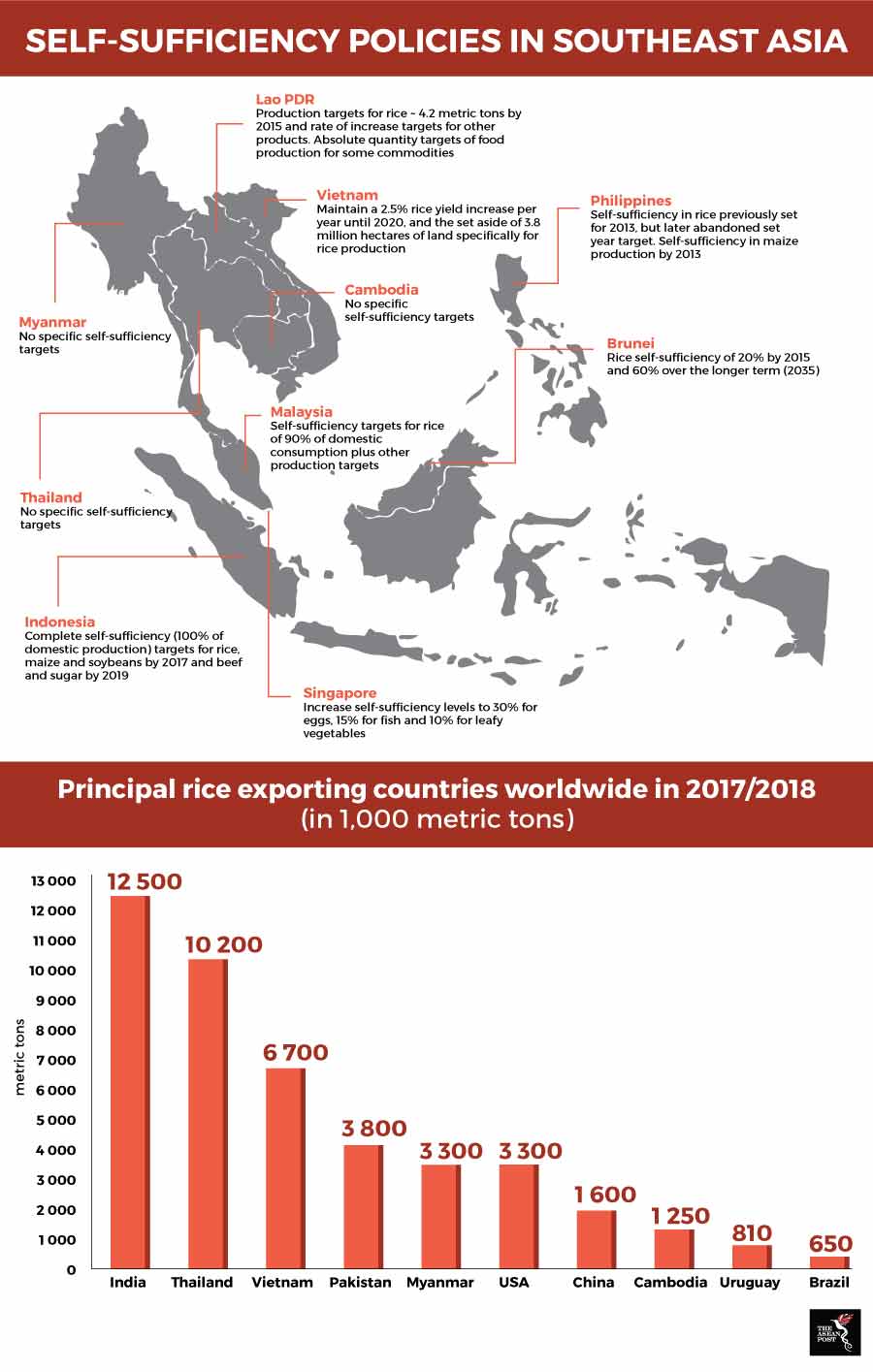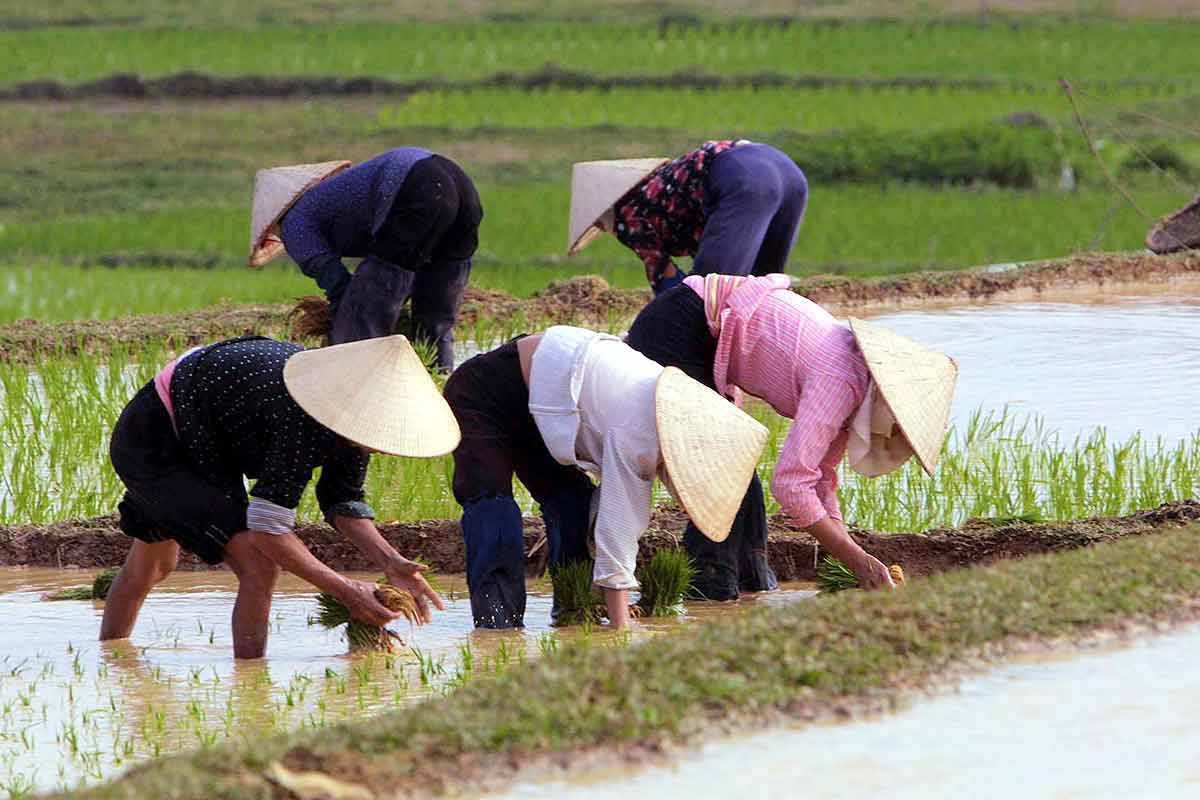It is irrefutable that rice is the staple food of Southeast Asia.
This love affair with the seed of the grass species, oryza sativa is not only rooted in the tangible world but has its own mystical underpinnings to it. Such a relationship is observed through the worshipping of the goddess of rice, fertility, and wealth, Dewi Sri, by communities in what is now modern-day Indonesia, prior to the advent of Islam. In today’s world, this religious adulation has now turned into economic endeavour with the cultivation and export of rice.
Among some ASEAN member countries, rice cultivation and export has become an important contributor to their respective gross domestic products (GDPs).
The Asian Development Bank (ADB) has projected that total rice output in ASEAN will grow at 1.37 percent annually, from nearly 110.5 million tonnes in 2010-2011 to 128.3 million tonnes by 2021-2022. In addition, most of this projected output is contingent on improved yields, increasing by 1.22 percent annually.
Thais in top spot
Amidst the rice pledging scheme that is now synonymous with the country, Thailand retains top spot as the region’s largest exporter of rice. This scheme was introduced by former premier, Yingluck Shinawatra in her 2011 election campaign and was subsequently implemented after she was given the mandate to lead the nation. One of the components within the scheme is the direct buying of unmilled rice by the Thai government from farmers at approximately twice the market rate. It is argued that such a move would put money in the pockets of poor farmers and stimulate domestic demand. However, according to a report by Global Legal Monitor, the government of Thailand would end up having to provide subsidies amounting to a whopping US$9.4 billion, an amount that has place a significant burden on the Thai economy.
Considering the fact that two-fifths of Thais work in agriculture (with most of them being rice farmers), the incumbent leader of Thailand, General Prayuth Chan-o-cha has not done away with the aforesaid scheme, rather he has re-evaluated it. His state budget for subsidies is less than 10 percent of what was implemented prior. Chan-o-cha has realised that he needs to implement policies that will facilitate an equilibrium in supply and demand. This is to avoid excessive price fluctuations and a heavy burden on public finances when market intervention is necessary to ease the hardships of farmers.
It is interesting to note that in 2017, Thailand exported 11.25 million tonnes of rice, an all-time record, up 14.8 percent year-on-year. As for 2018, The Land of Smiles is expected to export 9.5 million tonnes of rice, which indicates an improvement through Chan-o-cha’s smart recalculation of the plan implemented by his predecessor.

Source: Various souces
Quality of rice
Another point of concern is the quality of rice piling up in Thailand’s warehouses. There are growing claims that substandard rice of a dissimilar grain has contaminated the country’s stocks. Criminal groups and less than honest officials are said to have smuggled in thousands of tonnes of cheap grain from neighbouring Cambodia and Myanmar, in the hope of taking advantage of the Thai government’s generosity.
The significance of rice economics in the region is further exemplified by Indonesia’s production of this commodity. Agriculture Minister of the Republic, Amran Sulaiman pointed out that the country produced more rice than it needed in 2017, meeting President Joko Widodo’s target of rice self-sufficiency. Sulaiman also mentioned that rice production in January 2018 reached eight million tonnes, more than the average monthly consumption of 2.5 million tonnes.
Considering the multifaceted nature of rice economics in the region, it is important that proper regulation be put in place and implemented so as to do away with the tampering of rice stockpiles. Rice schemes ought to be thoroughly studied by governments and regulating bodies before their implementation.
As in the case of Thailand during Shinawatra’s rule, an attempt to pander to the whims and fancies of the agribusiness sector and fulfilling an election campaign promise, has had damaging repercussions on the country’s economy. Chan-o-cha’s timely re-evaluating of the scheme has to a certain extent prevented more serious financial implications on Thailand’s economy.
This article was first published by The ASEAN Post on 11 April 2018 and has been updated to reflect the latest data.
Related articles:
Cambodian cassava catches mosaic virus
Nuclear technology helps sustain rice supplies in Southeast Asia
